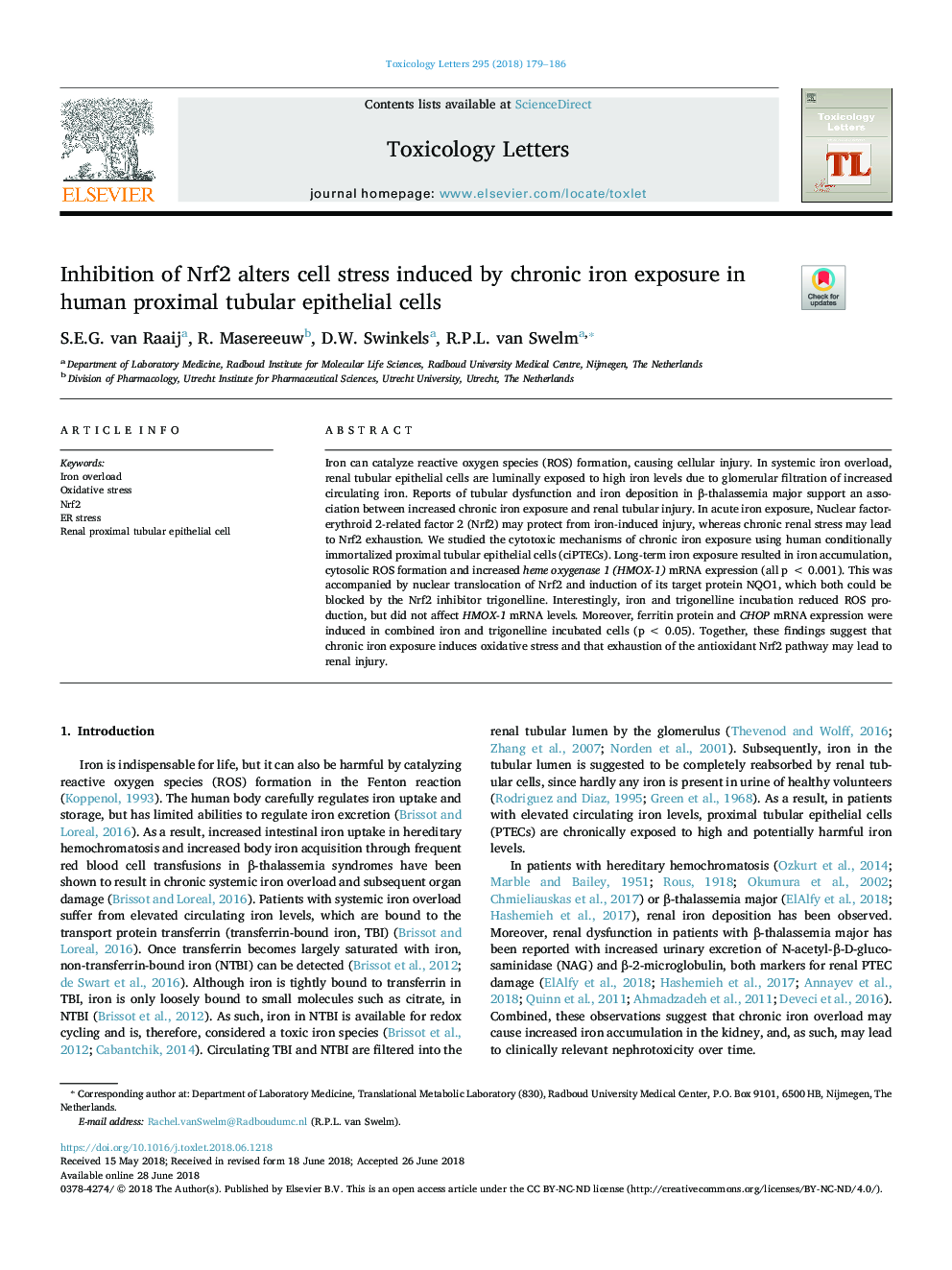| Article ID | Journal | Published Year | Pages | File Type |
|---|---|---|---|---|
| 8553093 | Toxicology Letters | 2018 | 8 Pages |
Abstract
Iron can catalyze reactive oxygen species (ROS) formation, causing cellular injury. In systemic iron overload, renal tubular epithelial cells are luminally exposed to high iron levels due to glomerular filtration of increased circulating iron. Reports of tubular dysfunction and iron deposition in β-thalassemia major support an association between increased chronic iron exposure and renal tubular injury. In acute iron exposure, Nuclear factor-erythroid 2-related factor 2 (Nrf2) may protect from iron-induced injury, whereas chronic renal stress may lead to Nrf2 exhaustion. We studied the cytotoxic mechanisms of chronic iron exposure using human conditionally immortalized proximal tubular epithelial cells (ciPTECs). Long-term iron exposure resulted in iron accumulation, cytosolic ROS formation and increased heme oxygenase 1 (HMOX-1) mRNA expression (all pâ¯<â¯0.001). This was accompanied by nuclear translocation of Nrf2 and induction of its target protein NQO1, which both could be blocked by the Nrf2 inhibitor trigonelline. Interestingly, iron and trigonelline incubation reduced ROS production, but did not affect HMOX-1 mRNA levels. Moreover, ferritin protein and CHOP mRNA expression were induced in combined iron and trigonelline incubated cells (pâ¯<â¯0.05). Together, these findings suggest that chronic iron exposure induces oxidative stress and that exhaustion of the antioxidant Nrf2 pathway may lead to renal injury.
Related Topics
Life Sciences
Environmental Science
Health, Toxicology and Mutagenesis
Authors
S.E.G. van Raaij, R. Masereeuw, D.W. Swinkels, R.P.L. van Swelm,
